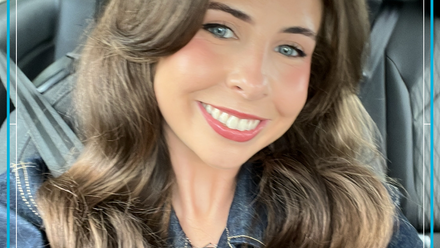During his dietetic placement, Long Li decided that he wanted to have a naso-gastric tube fitted, to help better understand the patient experience.
During my B Placement I started to work with patients who were fed via nasogastric (NG) tube. Back then, I mainly focused on factors such as risk of refeeding syndrome, feeding regime, and feeding tolerance and so on. of the patients. I started to wonder what it is really like to have an NG tube fitted so that I could understand more about how the patient experience and what it is like to live with, with either long or short term. Recently, during in my C Placement I had the chance to experience having an NG tube fitted and tried to manage eating and drinking with the tube in.
Prior to the insertion the nutrition nurse asked me to position myself on the chair upright and face forward. She gave me a cup of water and asked me to keep on drinking water because many people’s first reaction when the tube goes in is to pull it out and keeping swallowing fluid can help overcome that intention.
The insertion started
I could feel a gentle but consistent pain when the tube was going through my nostril and going down to the back of my throat. I could feel this foreign body in my throat and the urge was either to swallow or spit it out. I could see how being asked to keep drinking water could help alleviate that feeling.
The tube went and passed the back of my throat and continued going down. At some point the nutrition nurse stopped and told me that I had gone through the worst part of the insertion and asked how I felt. To be honest, I didn’t not want to say a word at that moment because I felt so uncomfortable and I was trying my best to get used to the feeling.
The nurse continued inserting the tube to get through my oesophageal gastric junction and I could feel that the tube was reaching my stomach. The nurse then used a syringe to get the aspirate back from my stomach and the PH of the aspirate was around 4.5 to 5, indicating the tube was in the correct position.
She taped the tube on my face and marked the tube so that we knew if the tube had moved at all while place. She also measured the external length of the tube and documented the information.
That was it!
After it was all set, there was a slight unpleasant feeling around the bridge of my nose. It was a consistent pricking inside the end of my nostril and it was the most uncomfortable feeling of the whole experience.
The nurses could not feed me via the tube due to the enteral feeds being a prescribed medication. However, I kept the tube in and had my lunch. Choosing a chicken wrap as my lunch was definitely a big mistake. I needed to open my month largely to put the wrap in and finely chew the chicken breast. Both of the actions needed movement of my mouth and it worsened the pricking feeling inside my nose and I could really feel the pain.
In the following two hours I tried not to move at all because any facial and body movement made my nose pain worse. I also avoided drinking or eating anything because the action of swallowing also made me uncomfortable.
The nutrition nurse told me that normally patients get used to the tube after 24 hours. However, drawing on my the two-hours experience I would say it’s very hard to manage eating and drinking whilst having a tube inserted just because it feels so unpleasant.
Pulling the tube out was not so uncomfortable as having it inserted. For the rest of that afternoon however, it still felt like there was something in my nose but it was most likely the psychological effect.
This short experience really gave me an insight into how a patients may feel when having a tube fitted. On reflection I will probably refuse to have this experience again because of the fear of the discomfort I felt. I think many patients may agree with me on this and this may explain why some of them want to pull the tube out, or refuse this route of feeding if they have had previous experience.
I also better understand how difficult it is to recommend to someone with a tube in to eat and drink normally, provided they are safe to do so. I might probably advise the patients to go for something relatively soft that doesn’t need much effort to chew.
Overall this was certainly not a pleasant experience but I strongly recommend student dietitians to experience it if they have the chance during placement as it’s a fabulous learning experience.






